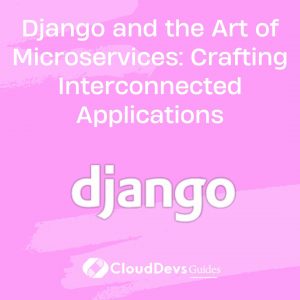Django and the Art of Microservices: Crafting Interconnected Applications
In the evolving landscape of web development, the integration of Django with microservices has emerged as a powerful approach to building scalable and efficient web applications. This post delves into the intricacies of connecting Django, a high-level Python web framework, with a microservices architecture. We’ll explore best practices, communication protocols, and practical examples to illustrate how these technologies can work in harmony. You can hire Django Developers for your projects to ensure greater success.
Table of Contents
1. Understanding Microservices
Microservices are a design approach where applications are structured as a collection of loosely coupled services. This architecture promotes flexibility, scalability, and ease of maintenance.
An in-depth look at microservices architecture Microservices.io.
2. Django’s Role in Microservices
Django, known for its “batteries-included” approach, provides a robust foundation for building web applications. Its compatibility with various communication protocols makes it ideal for integrating with microservices.
Django’s official documentation: DjangoProject.com
Microservices with Django: Real Python Article
3. Communication Patterns in Microservices
Effective communication between microservices is critical. Here we explore various patterns:
- Synchronous Communication: REST APIs
– Django REST framework simplifies the creation of RESTful APIs.
– Example: A product service requesting user data from a user service.
Django REST Framework: (Django REST Framework)
- Asynchronous Communication: Message Brokers
– Technologies like RabbitMQ or Kafka facilitate asynchronous communication.
– Example: An order service sending a message to a billing service without waiting for a response.
RabbitMQ official guide: RabbitMQ.com
4. Building a Sample Microservice with Django
Let’s create a simple user authentication service using Django and communicate with a product microservice.
Step 1: Setting Up Django
– Install Django and create a new project.
– Define a User model in the Django app.
*External Link Suggestion: Django installation guide [Django Documentation](https://docs.djangoproject.com/en/3.2/intro/install/)*
Step 2: Creating RESTful Endpoints
– Use Django REST Framework to create API endpoints for user operations.
– Example endpoint: `/api/users` for retrieving user data.
Step 3: Inter-Service Communication
– Use Django to send HTTP requests to the product service.
– Handle responses and integrate the data into your service.
5. Best Practices in Django Microservices Communication
- API Versioning: Ensure backward compatibility and easy upgrades.
- Service Discovery: Implement dynamic service discovery mechanisms.
- Security: Secure inter-service communication with techniques like OAuth.
API security best practices: OWASP.org
6. Challenges and Solutions
- Data Consistency: Implement distributed transactions or eventual consistency models.
- Debugging: Use distributed tracing tools like Zipkin.
*External Link Suggestion: Introduction to Zipkin [Zipkin.io](https://zipkin.io/)*
7. Real-World Examples
– E-commerce platforms: Using Django to manage user services and interfacing with order and payment services.
– Content Management Systems: CMS as one service, with separate services for authentication and content delivery.
Conclusion
Integrating Django with a microservices architecture offers a flexible, scalable solution for complex web applications. While challenges exist, the right approach and tools can create a seamless, efficient system.
You can check out our other blog posts to learn more about Django. We bring you a complete guide titled Django Real-time Alerts: A Push Notification Guide along with the Master Real-Time Communication in Django Apps with WebSockets and The Essential Guide to Social Logins in Django with OAuth and OpenID which will help you understand and gain more insight into the Django programming language.
Table of Contents







